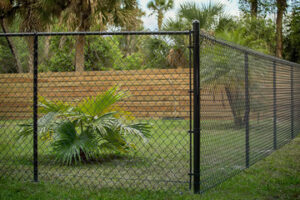Many expectant couples take Prenatal Classes. They can be offered by the hospital, clinic or birth center where they plan to deliver. They can also be found through private providers or online options.

These classes generally cover topics including: physiology of pregnancy changes, baby care basics (such as crib safety and SIDS prevention), childbirth preparation and breastfeeding options.
Childbirth is a major event in the life of a woman and her family. The goal of many prenatal classes is to help women prepare for labor and birth in a way that increases their comfort, decreases fear and leads to a positive birth experience. The goal is also to promote informed decision-making and empowerment.
The content of childbirth classes varies, but all include lecture, instructor-designed PowerPoint presentations, videos and group discussion. Couples are encouraged to participate actively in class, and instructors will offer a variety of techniques to address multiple learning styles. A book or other reference materials may also be provided.
Some classes focus on preparing the woman and her birth partner for a natural birth by teaching breathing and relaxation techniques to use during labor. The class also includes a detailed description of the signs and stages of labor and when to go to the hospital. Other classes are more medically focused and discuss different options for pain relief during childbirth including the pros and cons of each. Some classes include a session on what to expect in the hospital during labor and delivery as well as a question-and-answer session with a nurse educator.
Researchers have found that attending childbirth classes can significantly decrease a woman’s fear of childbirth and increase her anticipation of her birth experience. They have also found that women who attend childbirth classes are less likely to have a cesarean delivery. However, it is important to remember that other factors, such as caregiver performance and the woman’s personal preferences, also influence these outcomes.
One study used an intervention called Great Expectations to assess the impact of hospital-based childbirth education on a first-time mother’s fear and anticipation about birth. Participants completed an investigator-designed questionnaire before and after taking the course. Statistically significant changes were found in the postintervention period, and women who took the class reported less fearfulness and more excitement about their upcoming labor and delivery than did those who did not take the class.
Another type of childbirth class is a video-based series that provides a “virtual tour” of the woman’s body and how it moves during the process. This is a good option for couples who want to be more involved in the preparation process and have an understanding of how the various medical procedures are performed.
Postpartum
Pregnancy classes for first-time mothers often include information about postpartum recovery and infant care. These classes will teach you what to expect after your delivery and provide tips for a successful breastfeeding experience. Depending on the class you choose, you will learn how to bathe and diaper your baby, as well as how to soothe fussy newborns. Preparing for the arrival of a new baby can seem overwhelming, but these classes will help you feel confident and prepared.
Prenatal classes are also a great place to meet other parents and make friends. You will have many questions about childbirth and parenting as you progress through your pregnancy, and it can be helpful to talk with other parents who are going through the same thing. These connections can last a lifetime and be an important source of support as you raise your children.
Many women will attend antenatal (also known as labour and birthing) classes in the lead-up to their due date. These classes are usually held at the hospital, clinic or birth centre where they will be delivering. Some of these classes are free, while others have a cost. If you are paying for these classes, check with your private health insurance to see if they will cover the cost.
Some antenatal classes will include different types of birthing methods, such as the Bradley Method or Hypnobirthing. These techniques are designed to encourage an unmedicated, intervention-free birth. Some studies show that women who take these kinds of classes are more satisfied with their birth experiences than those who don’t.
Some antenatal classes will be for couples, while others are for expectant mothers only. Some of these classes are held at the hospitals where expectant mothers are delivering, and they will include a tour of the labor and delivery rooms. Others are offered in a community setting and focus on nutrition, exercise and fetal development. These classes are usually run over a few weeks and typically last about eight hours in total.
Infant Care
Like any new experience, learning about childbirth and caring for a newborn can be overwhelming. But knowing what to expect and what options are available can help reduce the fear that often comes with such a life-changing event. Classes run by maternity care providers offer parents a chance to learn more about the different aspects of labor, delivery and postpartum recovery, including infant care. Some of these classes include a tour of the hospital’s birthing center, while others are focused on preparation for labor and delivery or on topics that can help make the transition to parenthood smoother.
Many antenatal classes are for women only, but some are designed to include the father or other support person in the process of becoming a parent. Some are taught by a registered nurse or doula, while others may feature videos, demonstrations and hands-on practice. Some are held at the hospital or clinic where you’ll be delivering, while others are offered by community centers and private organizations.
Some prenatal classes also focus on infant care and can help you learn how to properly hold, bathe, feed and soothe your baby. They can also teach you about preparing for the arrival of your child, such as creating a safe environment and assembling needed equipment.
If you’re planning to breastfeed, a registered nurse specializing in lactation provides information and demonstrates techniques to help maximize your opportunity for successful breastfeeding. During this class, you’ll have the chance to ask questions and receive personalized instruction on positioning, latching, nutrition and avoiding common problems that can interfere with breastfeeding.
While this class is primarily meant for grandparents, family and friends, it also provides an introduction to the American Heart Association’s methods for infant and child CPR and first aid techniques for choking. Participants will have the chance to practice on a mannequin and learn tips on baby-proofing their home.
Other Topics
Many expectant parents find that a prenatal class, also known as childbirth classes or antepartum education, helps them better understand what to expect during pregnancy. It helps reduce fear by giving parents a sense of control and teaches them skills they can use in making decisions about their care. In addition, it provides an opportunity to ask questions and meet other parents who are going through the same experience.
Prenatal classes may include anatomy and physiology of pregnancy, which help explain the changes in the mother’s body. Other topics often covered are the stages of labor, pain management options and how to plan a safe birth. Medical interventions and cesarean section are sometimes discussed as well, so that expectant parents can make an informed decision about their birth plan.
A major component of a prenatal class is educating parents about breastfeeding and newborn care. Breastfeeding education may include tips on establishing a good milk supply and how to correctly latch baby on the breast. Newborn care is typically taught as well, including diapering and swaddling. Infant safety and first aid are also emphasized, so that expectant parents will know what to do in an emergency.
Most hospitals offer a series of classes that are held over the course of weeks or even months, and some provide them online as well. Whether you are expecting your first or your fifth, these classes can provide you with the information and skills to help you feel confident and supported through your childbirth journey. It is recommended that you sign up for classes as soon as possible, so that you can take them in the comfort of your own home and at a time that works with your schedule.

